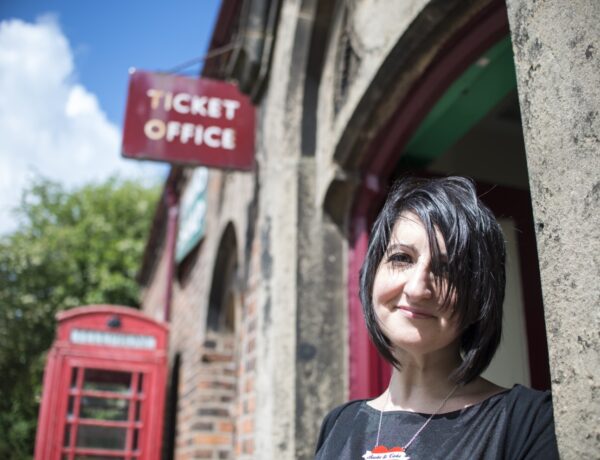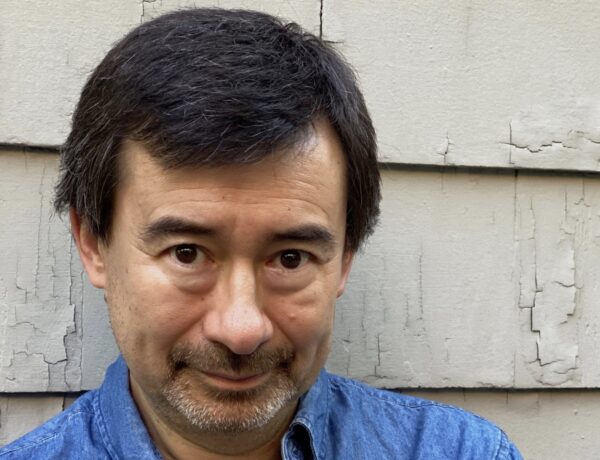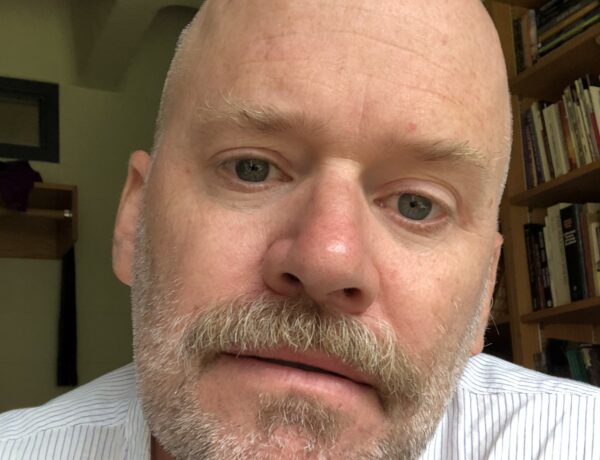Talia Lakshmi Kolluri is a mixed South Asian American writer from Northern California. Her debut collection of short stories, What We Fed to the Manticore, was longlisted for the 2023 Andrew Carnegie Medal for Excellence in Fiction, the 2023 Aspen Words Literary Prize, the 2023 Pen/Robert W. Bingham Prize for Debut Short Story Collection, and was selected as a 2023 ALA RUSA Notable Book.
Her short fiction has been published in The Minnesota Review, Ecotone, Southern Humanities Review, The Common, One Story, Orion, Five Dials, and the Adroit Journal.
Looking for inspiration to help you achieve your writing goals? Subscribe to our newsletter for exclusive insights into the routines, habits, and techniques of some of the most celebrated authors in history.
Hi Talia, welcome to Famous Writing Routines! Congratulations on the recognition and success of your debut collection of short stories, What We Fed to the Manticore. Can you tell us a little about the inspiration behind the title and the themes explored in the book?
The title for this collection and that particular story comes from the body of the story itself and I use this line very early on. I wrote the character of the manticore as the embodiment of a cyclone and in particular, I imagined him as something a tiger might conjure up when trying to understand what is happening when a powerful storm surges into the landscape.
I wrote this collection to answer a singular question for myself, which is, when an animal experiences something in the environment that is the result of human behavior either directly or indirectly, how does the animal make sense of that experience? What does the climate crisis mean to them? How do they understand war? What about poaching? How do they navigate and understand cityscapes?
I know how I understand and contextualize these things, but animals spend much of their lives with their environments being acted upon without any tools to understand why or how things are the way they are. I wanted to come at that question from different directions to see if I could answer it by narrating stories all from animal perspectives.
Can you talk about the creative process that went into putting together the collection?
It was a combination of intensive research, a very good playlist, kinetic activities to try to embody animals, and a healthy dose of daydreaming. I usually start with a kernel of reality and take inspiration from something real that has happened in the natural world, or involving animals in some way, and then I imagine the narrative through an animal’s eyes.
In a lot of ways, animal behavior can shape the narrative, but in this collection I incorporated features of real events or circumstances involving the natural world. After I have a first draft complete, I return to my research to refine how I’ve portrayed the animals’ senses and perceptions and well as their behavior, and I do a lot of place based research to make sure my setting is rendered as faithfully as possible.
I used this process for each story in my collection, and I also made sure to deliberately choose settings that were distributed across the globe. I don’t have a story set in every continent, but I’ve incorporated several regions of the world so that I can show the broad scope of human impacts on the environment.
You’ve had great recognition for What We Fed to the Manticore – being longlisted for several awards, including the 2023 Andrew Carnegie Medal for Excellence in Fiction and the 2023 Pen/Robert W. Bingham Prize for Debut Short Story Collection. How did it feel to receive such recognition for your work?
It’s been a pretty delightful surprise to see my collection included in longlists alongside some tremendously talented writers and I’m still in shock to a certain extent. It doesn’t quite feel real even now. I think most short story writers are accustomed to managing their expectations for their collections because what we hear so often is that novels are far more popular and visible than short stories.
This always seemed odd to me because I personally love reading collections and always have, but I’ve heard this refrain so many times that I internalized it. I also am writing in a style that is somewhat unusual so perhaps I moderated my expectations even further. During the ten years or so that I was writing these stories, the number of people besides my spouse and family members who seemed to like them was fewer than 20 people. So it feels surprising and wonderful to know that readers have enjoyed my book and found the stories to be meaningful.
Your writing draws upon your experiences as a mixed South Asian American. How does your cultural background inform your writing, and how do you approach representing underrepresented communities in your work?
As a mixed-person, I often feel that I exist in a liminal space culturally in the sense that I belong to my heritage cultures and communities but am not fully of them. I think this makes me prone to being an observer of both my circumstances and my feelings about them, which I think is good for a writer.
In a practical sense my background has influenced my writing immensely and I think that influence grows as I get older. The long tail of culture is often coiled in food and storytelling (and sometimes storytelling over food) and so I tend to spend my time both eating and reading as a way to connect with my own heritage. Both sides of my family are from parts of the world that have a rich history of oral storytelling, folktales, and religious stories so I read quite a lot of those and I think it has seeped into my writing.
The thing I like about these types of stories is how they change and are adapted by the teller. They expand or contract or transform depending on why the story is being told, and to me that feels quite like breathing. It’s as though the stories are alive. I am trying to write inside of that tradition while still acknowledging my modern self and the world I live in.
I also think that many stories from oral traditions around the world are explicitly didactic, which is something that is sometimes discouraged in contemporary American literature. I think that writing with a purpose and making that purpose fairly clear is something that I’ve incorporated into my work in my own way.
When it comes to depicting underrepresented communities, I want to first acknowledge that this term primarily refers to groups that are underrepresented in English language work from the United States because I think that when considered in a global context, there is a lot of work that isn’t available to American readers, and a lot of perspectives and communities that are underrepresented in what is published here.
But when I do portray a community in this category (in particular communities that are not my own), I try to be very mindful of how work about underrepresented people and places is received by different categories of American readers. I don’t want my work to alienate readers from those communities, but I also don’t want it to be misunderstood as representative of the communities as a whole.
The way I’ve personally approached this is to do two things in particular. First, if I’m going to portray a group that is historically underrepresented in American literature, I prioritize writing a story that portrays a very specific character having a very specific experience. There is always a risk that a story about an underrepresented group will be misunderstood as a universal representation of the entire group’s experience, but it’s my hope that writing as specifically as possible will focus readers on the characters and their individual experiences instead. The second thing I do is I read work written by members of the community. I think if I want to portray characters from an underrepresented group but I have not yet engaged with work from that group, then perhaps I’m not ready to write about them.
I don’t know if my approach is successful, and I think that’s really for readers to decide, but my hope is that readers are able to see that I have tried to consider how my work will come across to them in this particular context.
Do you struggle to stay focused while writing? You’re not alone! That’s why Famous Writing Routines recommends Freedom – the ultimate app and website blocker for Mac, Windows, Android, iOS, and Chrome. With over 2.5 million users, Freedom helps writers stay on task and avoid distractions. Get started for free today and reclaim your productivity!
As a lifelong Californian, how do you think your environment and surroundings play a role in your writing and creative process?
I think California is one of the most dynamic and beautiful places to live, and I also think that it is a place where the impacts of the climate crisis are cast in very sharp relief which means it was inevitable that this particular theme would find its way into my work. I’m not sure how else my home state has influenced my writing process except perhaps it reinforces my habit of being observant.
Take hiking for instance, if you go into the mountains anywhere in California, there is going to be some kind of plant or animal or environmental feature that requires caution. It could be poison oak, rattlesnakes, mountain lions, the sun at high elevations, unpredictable temperatures, and so on. All of these things require consistent attention so you can avoid them.
But in paying attention, you are compelled to notice all of the other things that exist alongside the danger. Small little insects, birds, leaf litter on the forest floor, decaying logs, moss, all of these living things. And alongside it all, this absolutely astonishing beauty. No single mountain area in California is exactly the same. They all have complex and unique ecosystems that demand attention and maybe persistent exposure to this landscape has shaped me to be observant.
Your short fiction has been published in various literary magazines, including “The Common” and “One Story”. How has publishing your work in literary magazines impacted your writing and your journey as an author?
Literary journals have been one of the most transformative things for my writing life. After I wrote the first couple of stories, I knew I wanted to write an entire collection from animal perspectives. Prior to selling my book, I was able to place a handful of stories in literary journals and this impacted my writing in so many significant ways.
In my experience, journal editors do what they do because they love literature, and many of them prioritize finding emerging and unknown writers and nurturing their work. I was fortunate to work with several wonderful editors along the way who did a wonderful job of guiding me toward bringing out the best in my stories, without being prescriptive or asking me to rewrite the piece in a different style.
What I mean is that the editors I worked with gave me a lot of creative agency while gently nudging me to take more risks with how I was writing. Having my work handled with such care and respect boosted my confidence tremendously and was vital in showing me that there are readers out there for my work.
Also, my editor from Tin House found me through one of my journal publications when she read “The Good Donkey” in The Common. If The Common hadn’t published my story, I may not have found my way to publishing a book at this particular moment. So much of my success now is because journal editors were willing to take a chance on me when I was just starting to actively seek publication.
Can you share with us your approach to managing your time and what a typical day of writing entails for you?
I don’t really have a typical writing day and like many writers, I have a full time job and other responsibilities that make my creative work something that I must fit in around everything else. I used to think that I needed a perfect environment and endless time in order to do my best work, but the reality is that most writers will rarely, if ever, find themselves in their ideal writing conditions.
I’ve found that what works best for me is to carry a little notebook around with me and when a line comes to me or I have a free moment, I write in the midst of whatever else I’m doing. I keep doing that until the lines add up to something a bit more substantial and then I expand into a first draft from there.
If I do have a day where I have a sustained period of writing time, then I like to choose a song that evokes the feeling of whatever I’m writing and I play it on a loop until I feel submerged into my idea, and then I just keep going until I can’t anymore. This sort of fragmented and then sustained approach worked really well for me when writing short stories, and I’m in the process of finding out how well it works for something longer.
If you could have a conversation with any author throughout history about their writing routine and creative process, who would that person be?
I know that when these questions are usually asked, most people answer by naming someone who is both long gone from this world, and either enigmatic or iconic, because it’s an opportunity to imagine having the ability to understand one of those historical figures.
But I actually would love to talk to a particular living writer, Helen Oyeyemi. Her body of work is so varied and so imaginative. It’s poetic and unexpected and strange in the best possible way and I would love to know how she begins and how she finds her way around and through a story. And if it’s unexplainable and is the result of some process unknown even to her, I would like to know that too.
I’d love to know about the books you’re reading at the moment. What have been some of your favorite reads?
I’ve been reading a lot of debuts lately, beginning in 2022, which has been tremendously fun. There are so many exceptional debuts that have come out recently and it’s very difficult to winnow that list down to a few. But I would like to highlight another book that I really enjoyed.
For the past several years, I’ve been purposefully choosing to add works in translation to my regular reading rotation and at the end of 2022 I read a wonderful book called Catch the Rabbit by Lana Bastašić. She translated the text herself from Serbo-Croatian and it’s a gorgeous and elegiac examination of the transformation of childhood friendships, the concept of home after migration, belonging, loss, and identity, all set against the backdrop of post-war Bosnia. It’s beautifully written and utterly absorbing and I recommend it highly.
What advice would you give to aspiring writers, particularly those from underrepresented communities?
My one crucial piece of advice that I would give to underrepresented writers is to articulate your creative vision to yourself, and find a voice that feels that it is authentic to you, and then commit to it independent of what other people tell you.
One of the challenges of being a writer who works outside the established literary system, who engages with writing traditions outside the western canon, and who incorporates writing styles in conversation with their heritage, is that the work may not be understood by everyone who reads it. But that doesn’t mean that it has no value, or needs to be changed. It may mean that the work is still in search of the right audience.
A book that was helpful to me and that I’m glad to have found before I finished my collection is Craft in the Real World by Matthew Salesses which interrogates the traditional workshop model and the context in which workshops have historically placed stories, and then offers alternative ways of thinking about them and opportunities to reframe critique.
I don’t mean to suggest that writers should reject revision altogether or that there are never opportunities for growth. But I do think it is useful and valuable to discard rigid rules of fiction construction if they run opposite to your creative vision and feel inauthentic to you as a writer. Personally, my stories felt more successful to me when I embraced characters and structures and techniques that were outside the norm of the stories that are frequently held up as examples of what writing should look like.
What does your current writing workspace look like?
I have several places that I consider writing workspaces for different purposes. I prefer to write with a combination of longhand and typing, and I write a lot of my initial drafts out in longhand in small notebooks, and then I do a first pass of revising as I type them out, then I further revise that first revision by hand after printing, and then I type in changes. I do this cycle of handwriting and typing over and over until I’ve taken it as far as it can go. I do these things in different spaces.
I have a spare room at home that is set up as my office and this is where I type things and revise. I used to use a small laptop, but in 2020 I worked primarily from home for almost a year and after using my laptop for 8-10 hours a day for my day job and then in the evenings and weekends to write, I realized that squinting at a tiny screen was going to give me a permanent headache. So, I replaced it with a desktop with a larger screen and I haven’t looked back.
For my longhand work, I like to sit in front of a window in a dining room that we turned into a library. My husband built a lush garden with Japanese maples, a stone lantern, and these little terraces, all covered with this lovely delicate plant called “baby’s tears” and it’s all tucked behind a row of hedges so it’s primarily only visible from inside the house. I love that it’s like a secret garden.
So when I want to work on a first draft, I sit by that window in a futon that I bought as a teenager with cash I earned from babysitting, and which I seem to be unable to let go of. It’s covered with a hand printed fabric throw and a random pillow assortment, and a teddy bear and I just like to sit there with my research stacked up and listen to the songbirds through an open window.

Affiliate disclaimer: Some links on this website are affiliate links. We may earn a small commission if you make a purchase through these links, but only promote products we truly believe in. We disclose affiliate links and give honest reviews.



No Comments